This germination science investigation is very simple but fascinating. Did you know you can grow a bean in a jar with just a little water? Once the seed has germinated, you can place it in soil for the plant to finish growing.
The jar allows children to see the seeds, roots and shoots easily.
What is germination?
Germination is the sprouting of a seedling from a seed.
Three factors are important for germination.
Water—Seeds need water for germination to occur. When a seed absorbs water, it starts to swell, the outer coat cracks and roots start to grow through.
Oxygen - oxygen is needed for a plant to grow (oxygen is needed for respiration to occur ). Seeds buried too deeply in the soil won't grow.
Temperature - the temperature can be important ( warm or cold ), depending on the type of seed.
Once a seedling has used all the nutrients from the seed, it then needs to take nutrients from the soil. Once your seed has germinated and grown a little bit, you'll need to transfer it into a pot of soil.
Light is not needed for germination but is needed for a plant to grow.
Roots grow downwards to anchor the plant in the ground and find nutrients, and shoots grow upwards to find light.
How to grow a bean in a jar
What you need
- A broad bean seed
- Jar
- Kitchen towel or a napkin
- Water
Instructions
- Swirl a small amount of water around the jar.
- Fold your napkin or kitchen roll and place it in the jar ( we also made the kitchen roll very slightly damp).
- Place the bean seed in the jar resting on the napkin.
- Spray some water on the bean every few days.
The bean should start to grow roots after a few days. This is called germination.
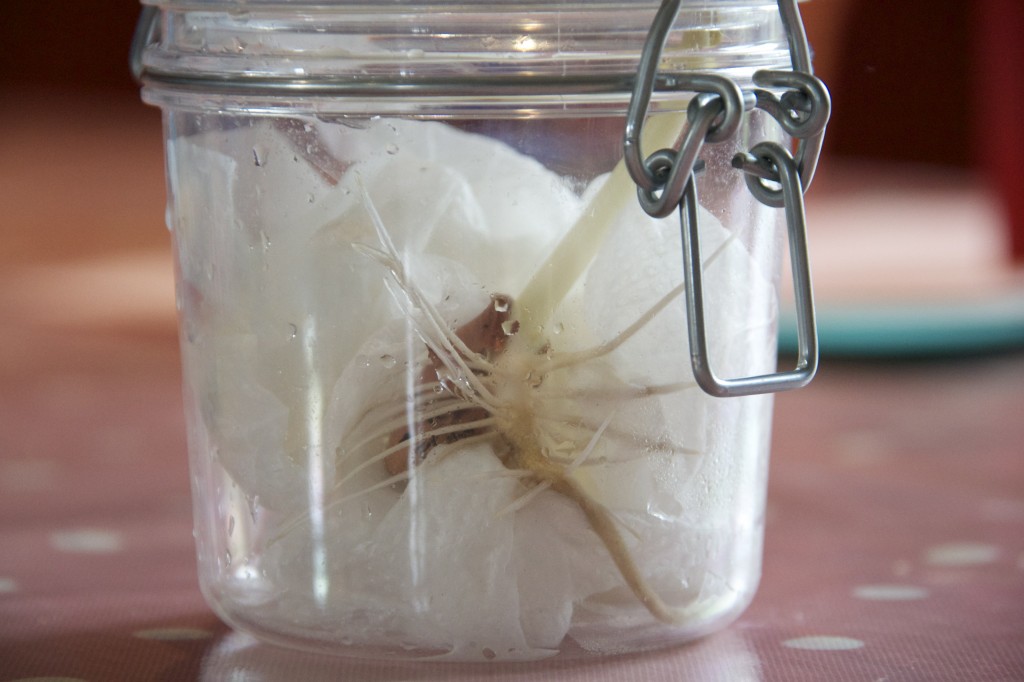
We kept one bean in the dark and one in the light. Both seeds germinated and grew into small bean plants. This shows that light is not necessary for germination.
You can see here that the plant grown in the dark is slightly less green than the one grown in the light. We have seen this before when growing cress.
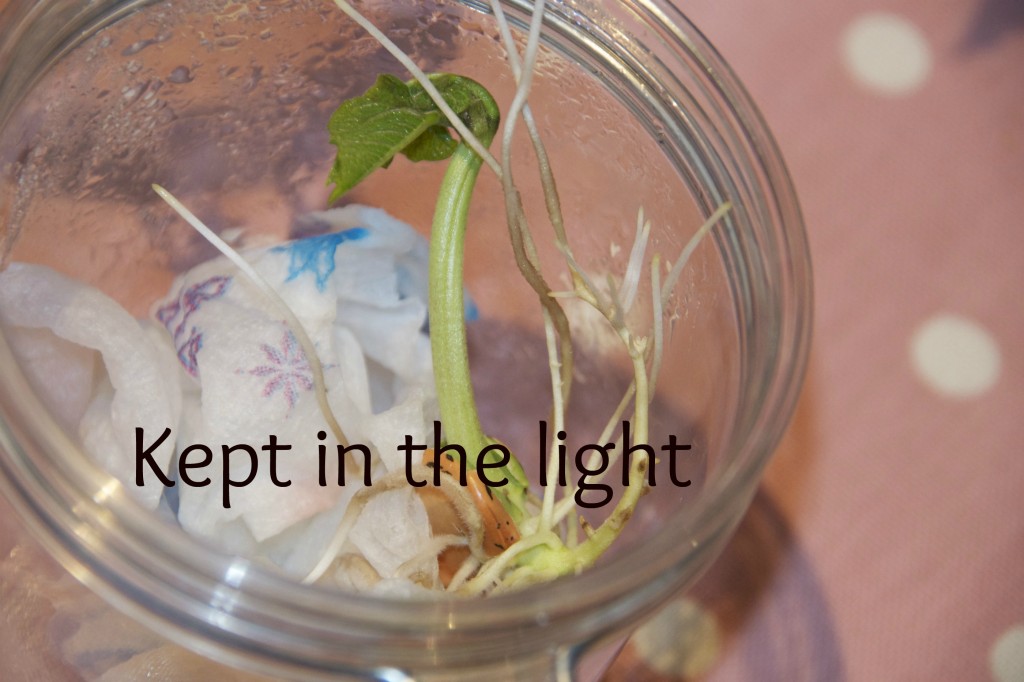
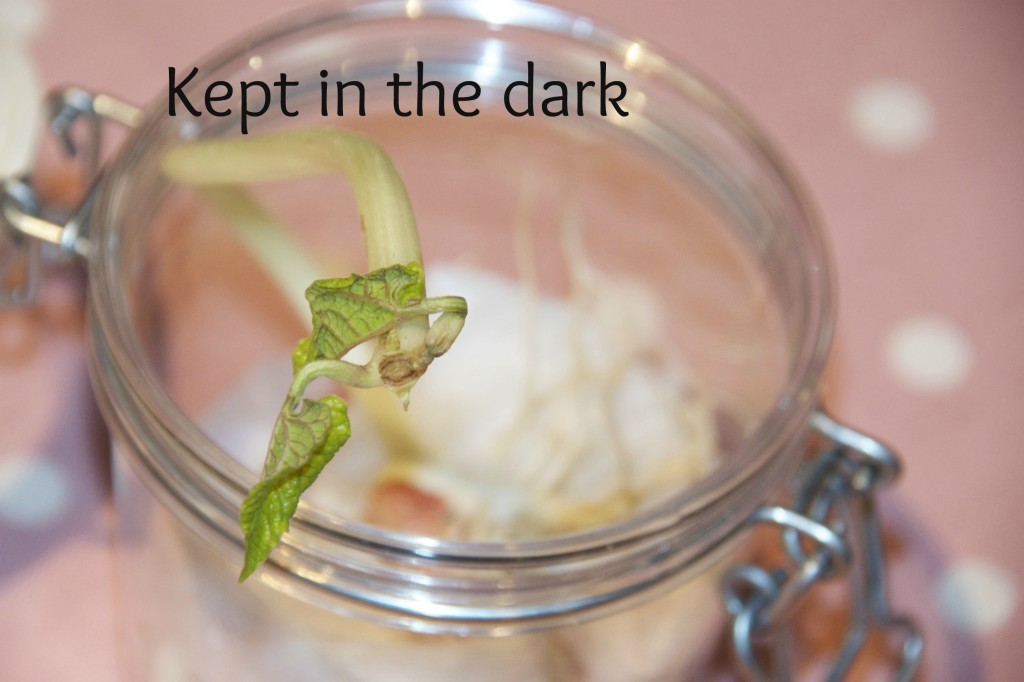
What amazes me the most is that all this can grow from one tiny seed with no additional nutrients other than those contained in the bean.
After a few days in the light, the bean plant kept in the dark was as luscious a green colour as its counterpart.
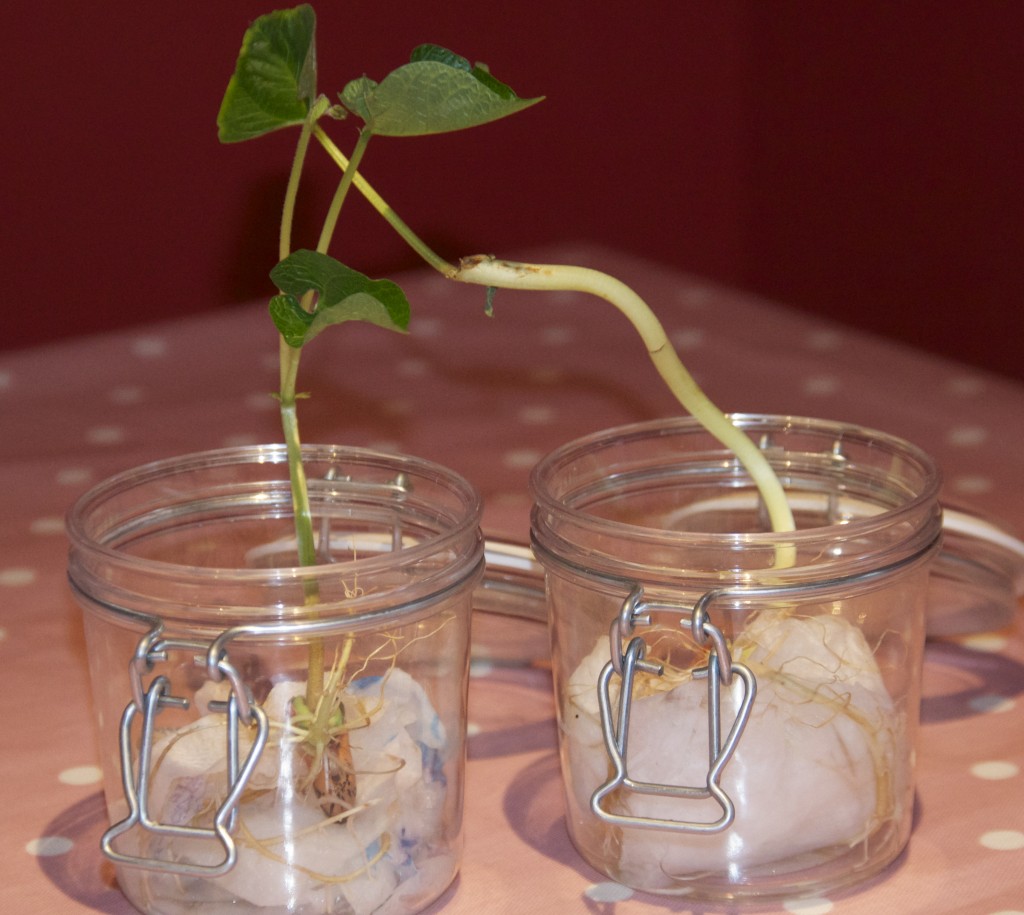
Bean in a jar instructions
Download the instructions completely free!
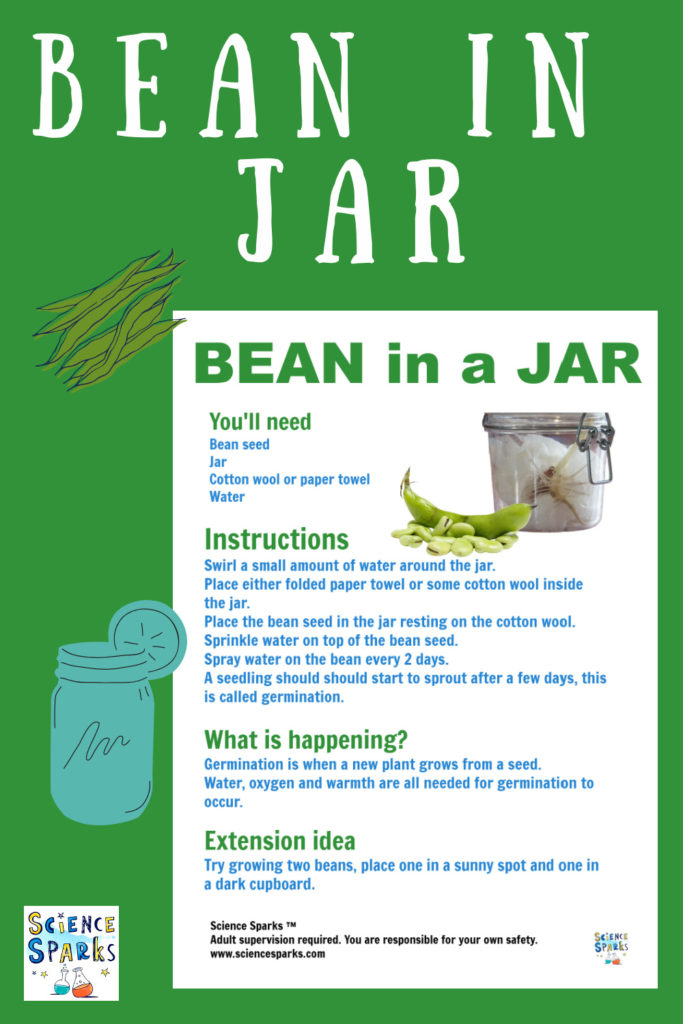
More plant science
Little ones will enjoy growing a bean for Jack and the Beanstalk.
Inspiration Laboratories has a lovely plant science experiment growing seeds in different soil types, such as sand and stones.
Another idea is to dissect a plant or try one of our other fun plant science experiments for kids.
Suitable for:
Key Stage 1 Science - Plants
Plants
Identify and describe the basic structure of a variety of common flowering plants, including trees.
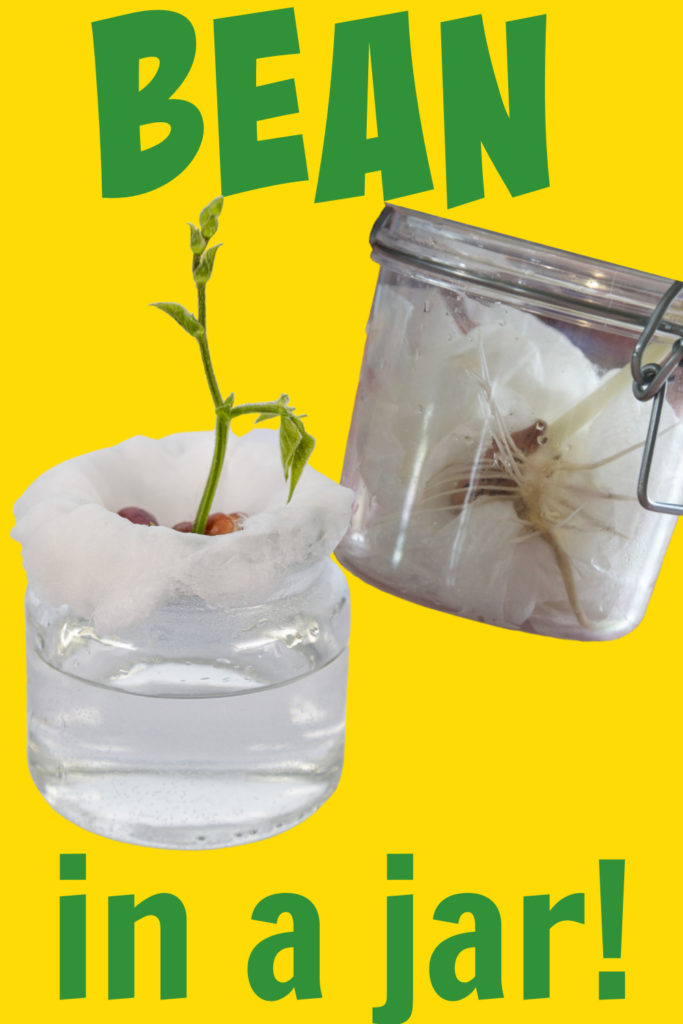
Last Updated on July 15, 2025 by Emma Vanstone
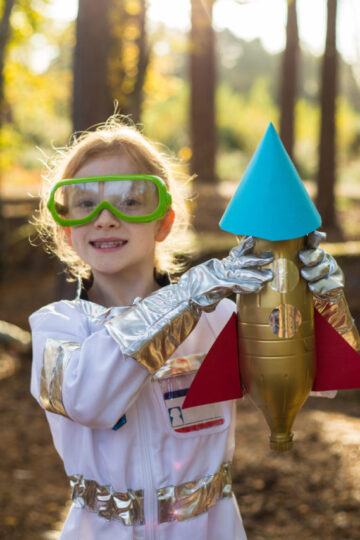

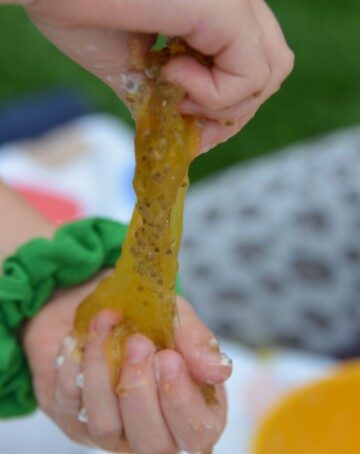
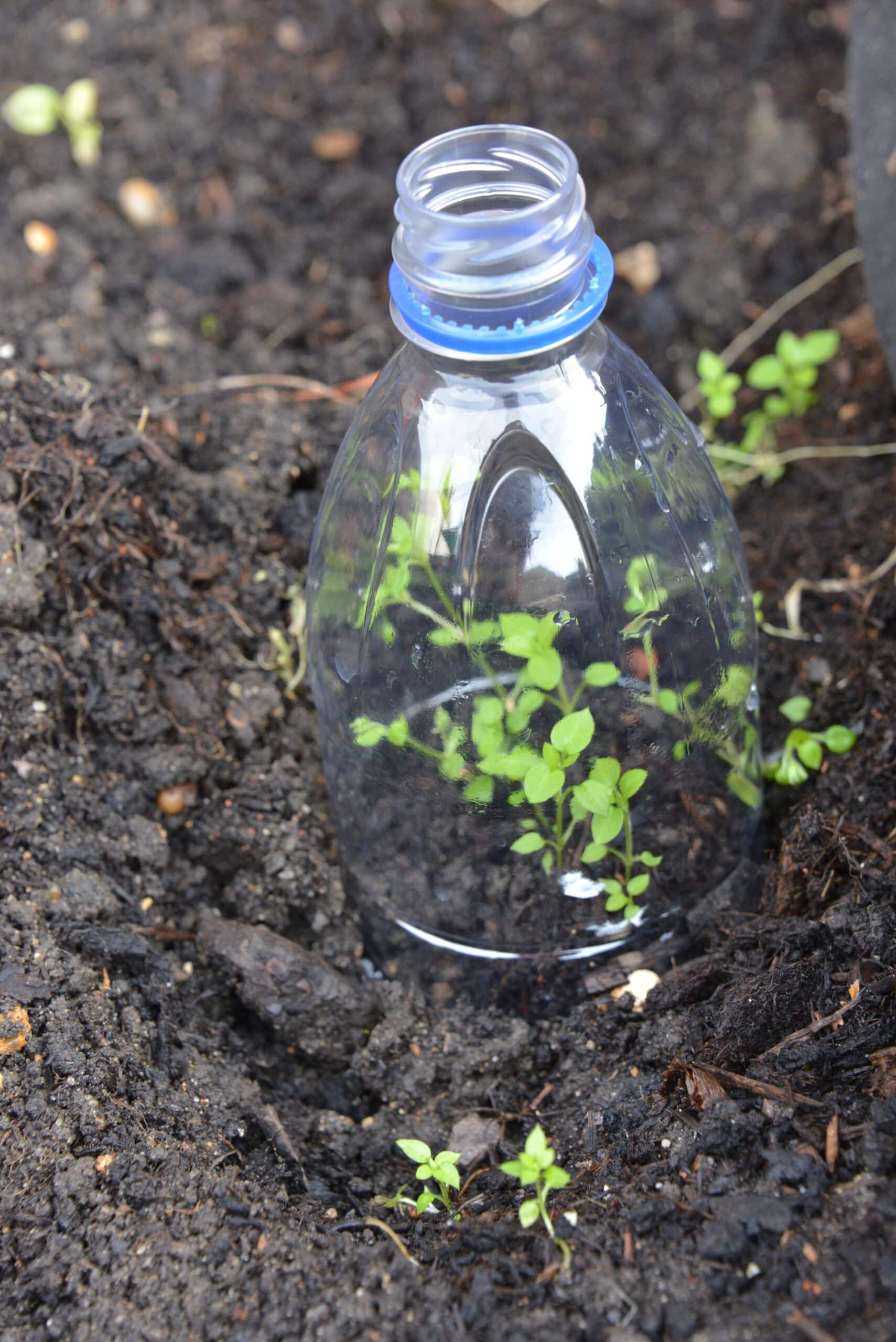
Juliet Lewin says
You keep coming up with really inspiring ideas. Thankyou!
ScienceSparks says
So glad you like them!
Bobbi Capwell says
I love this idea. It is so much better than the ziploc bag on the window. (Maybe it is just me, but those always get so nasty.
Plus it would be great to have where the students could see actually grow and record the height.
Love it.
ScienceSparks says
oooh yes, what a good idea!
Ann says
It is fascinating and beautiful! We have to try this!
ScienceSparks says
It was great! and so simple x
Cerys @ Rainy Day Mum says
We love this activity. Ours is growing strong and we're going to try transferring into the soil and growing further now
Thank you for linking to Tuesday Tots this week
sarahmumof3 says
love this idea.. will find some jars x
Carrie says
How fun!! I love the lessons where they get to see the roots that would be underground. Thank you for sharing at Sharing Saturday! I hope you are having a great week!
Helen says
Ooh great way to use my jars! Now to get some beans x
Amber says
We grew a bean in a glass Mason jar for each kid a couple months ago. Can you believe they ate still thriving? One even grew a bean pod with beans in it. I should transfer them to a pot with soil.
Maria says
I would like to know just why this works. Why is the one kept in the dark white? I know it has something to do with light. And why did it grow faster that the one in the light? Thank you!
Emmett Galloway says
Hi there, can you use any seed for this?